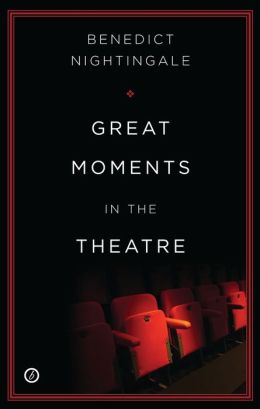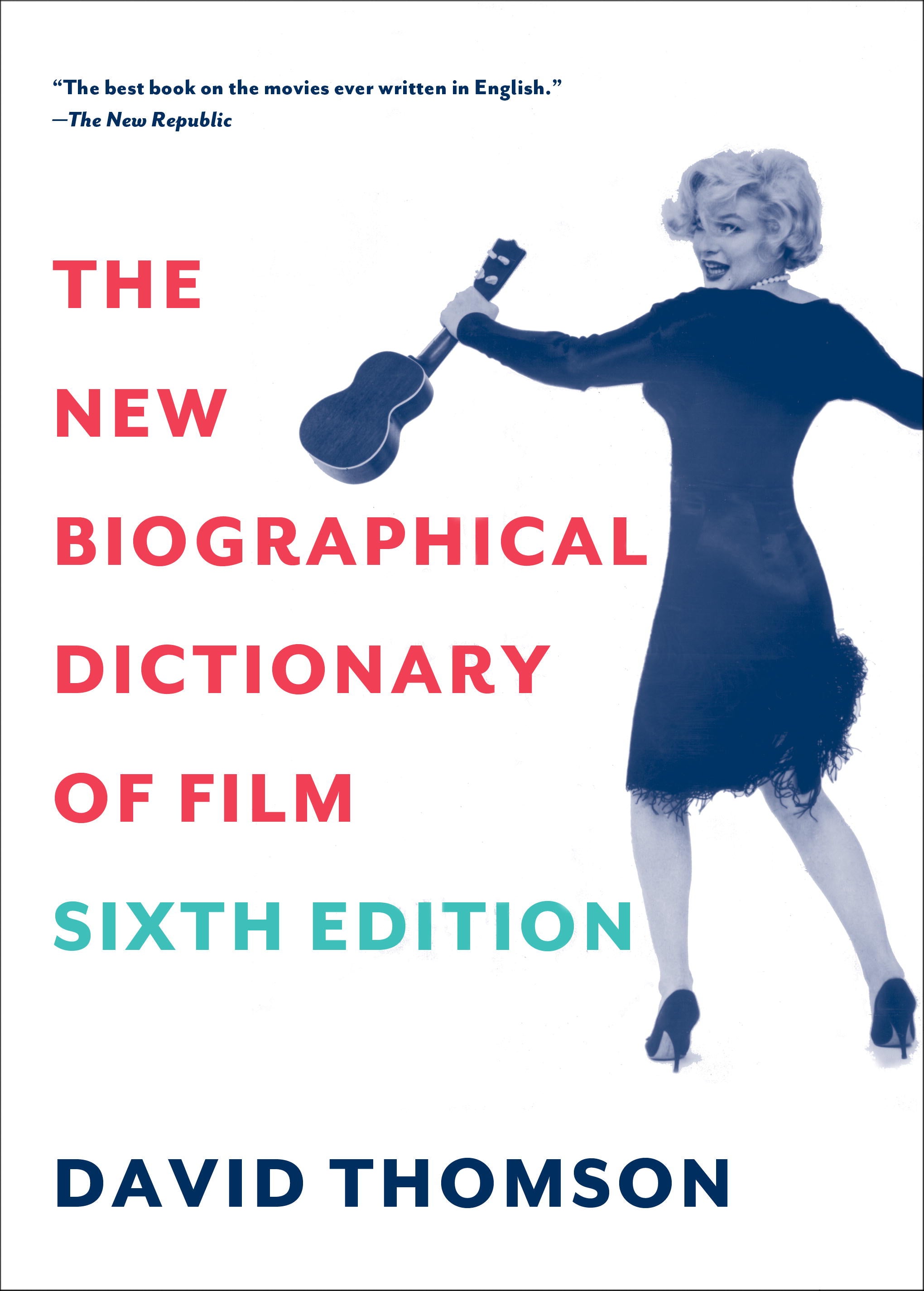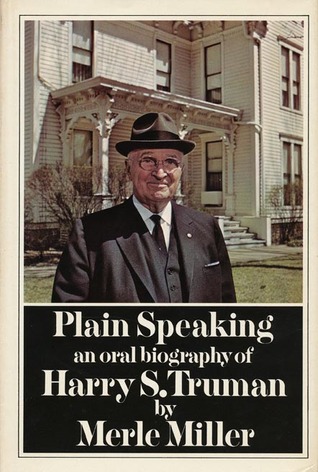The Tony Awards are given out by the American Theatre Wing, a service organization founded during World War II to oversee Broadway's contribution to the war effort. The Wing ran the famous Stage Door Canteen. After the war, the Wing remained in existence, shifting its mission to supporting the theater generally and bringing theater resources to communities. The Tony Awards -- named in honor of the Wing's co-founder, director and actress Antoinette Perry -- began in 1947. The first awards ceremony was a relatively modest affair in a hotel ballroom. Only a handful awards, many of them honorary, were presented.
Thursday, October 16, 2014
TCR on Broadway: Interview with Author Peter Filichia on Broadway Musicals That Did Not Win the Tony Award
In the recently published Strippers, Showgirls, and Sharks: A Very Opinionated History of the Broadway Musicals That Did Not Win the Tony Award author and theater critic Peter Filichia takes a vibrant and extremely well-informed look into why so many classic shows failed to win Broadway's biggest prize. The book's title refers to three especially admired non-winners -- Gypsy (strippers), Follies (showgirls) and West Side Story (Sharks, a street gang).
The Tony Awards are given out by the American Theatre Wing, a service organization founded during World War II to oversee Broadway's contribution to the war effort. The Wing ran the famous Stage Door Canteen. After the war, the Wing remained in existence, shifting its mission to supporting the theater generally and bringing theater resources to communities. The Tony Awards -- named in honor of the Wing's co-founder, director and actress Antoinette Perry -- began in 1947. The first awards ceremony was a relatively modest affair in a hotel ballroom. Only a handful awards, many of them honorary, were presented.
The Tony Awards are given out by the American Theatre Wing, a service organization founded during World War II to oversee Broadway's contribution to the war effort. The Wing ran the famous Stage Door Canteen. After the war, the Wing remained in existence, shifting its mission to supporting the theater generally and bringing theater resources to communities. The Tony Awards -- named in honor of the Wing's co-founder, director and actress Antoinette Perry -- began in 1947. The first awards ceremony was a relatively modest affair in a hotel ballroom. Only a handful awards, many of them honorary, were presented.
Friday, September 26, 2014
"Vanessa: The Life of Vanessa Redgrave" (Interview with biographer Dan Callahan)
At the opening of his superb new biography Vanessa: The Life of Vanessa Redgrave, author Dan Callahan takes readers back to 1997 when he was a drama student in New York. From a discount-price, obstructed view seat the young Callahan watched the great Vanessa Redgrave as Cleopatra in Shakespeare's Antony and Cleopatra. At the end of the performance, a matinee at the Public Theater, Redgrave solemnly informed the audience that she had just received word of the death of Fred Zinnemann who had directed her Oscar winning performance in Julia two decades earlier. Redgrave praised Zinnemann's Western film classic High Noon, citing it as a brave statement against the obsessive anti-Communism that pervaded American society in the early 1950s. Then, in her soft British accent, Redgrave astonished the audience by launching into a rendition of the theme to High Noon, a twangy ballad ("Do not forsake me, oh my darling!...") originally sung by Tex Ritter.
The crowd drifted out of the theater as Redgrave continued through the verses of the song but Callahan was transfixed. Nearly twenty years later, his fascination with Redgrave has not diminished.
"I just can’t get enough of watching her. I think that there is something very special going on when she acts, and I wanted to celebrate that," Callahan told The Committee Room.
The crowd drifted out of the theater as Redgrave continued through the verses of the song but Callahan was transfixed. Nearly twenty years later, his fascination with Redgrave has not diminished.
"I just can’t get enough of watching her. I think that there is something very special going on when she acts, and I wanted to celebrate that," Callahan told The Committee Room.
Wednesday, September 17, 2014
TCR Remembers Penelope Niven, author of books on Thornton Wilder and James Earl Jones
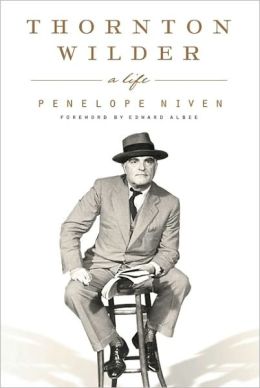 |
| Thornton Wilder: A Life by Penelope Niven |
In early 2013, Niven generously gave an engaging and in-depth interview to TCR in regard to the recently published Thornton Wilder: A Life.
Kirkus Reviews called Thornton Wilder: A Life "satisfying and insightful...a perceptive, indispensable portrait of a productive and restlessly intellectual life" and the Boston Globe praised it as "a sweeping look into the life of a man who left an indelible mark on the American theater...a vital work of scholarship."
Thursday, September 11, 2014
In Honor of the 75th anniversary of 'Gone with the Wind' -- An Interview with Kendra Bean, author of "Vivien Leigh: An Intimate Portrait"
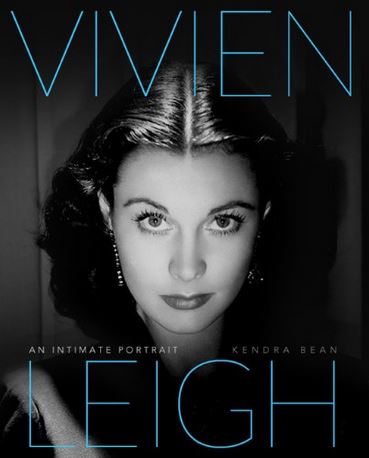 |
| Vivien Leigh: An Intimate Portrait by Kendra Bean. |
At the center of this immortal film is the performance of Vivien Leigh as the scheming Southern belle Scarlett O'Hara. While it may be possible to imagine another actress as Scarlett, it is difficult to see Gone with the Wind achieving such tremendous success if Leigh had not been cast. Leigh's remarkable ability to convey steely determination underscored with trembling fragility is an essential element. Even in the capable hands of Katharine Hepburn or Bette Davis, both of whom were among the many actresses who wanted to play Scarlett, Selznick's grandiose production may have come down to us as an overblown, dated melodrama.
There have been major biographies of Leigh by Anne Edwards (1977), Alexander Walker (1987), and Hugo Vickers (1989). Bean, a young American film historian based in London, represents a new generation of film scholars. She told TCR that she was drawn to write about Leigh, who died from a badly treated case of tuberculosis at age fifty-three in 1967, "because she’s interesting, often misunderstood, and nothing I’d read about her before seemed to satisfy my curiosity about her life or her work."
Bean is the first major Leigh biographer to have access to the papers of the actor Laurence Olivier, acquired by the British Library in 2000. Leigh and Olivier were married for twenty years before divorcing in 1960.
Wednesday, September 10, 2014
The Committee Room's New Focus: Film, Theater, and Television
Below are links to some of the articles on film, theater, and television that we have already published.
TCR Spotlight on Theater: Great Moments in Theatre by Benedict Nightingale
Writing for Television: An Interview with Jennifer Keishin Armstrong, author of Mary and Lou and Rhoda and Ted and All the Brilliant Minds Who Made 'The Mary Tyler Moore Show' a Classic
Monday, August 25, 2014
TCR Spotlight on Theater: "Great Moments in the Theatre" by Benedict Nightingale
"Drama critics come in all kinds, besides, of course, good and bad. There are those who regurgitate the plot and those who gallop off on hobby-horses. There are those with sound ideas but no style; those with impressive styles but no taste...Then there are the really good ones, like Britain’s Benedict Nightingale, whose song should be heard far beyond Berkeley Square," writes John Simon in The Weekly Standard.
Benedict Nightingale reviewed plays for the Times (London) for twenty years before retiring in 2010. Prior to joining the Times he spent nearly as long a period as theater critic for The New Statesman. In between these lengthy stints he came stateside to write for the New York Times. Nightingale began his career as a drama critic while still a teenager with a review of a local production in a suburban London newspaper and earned his stripes as a professional critic covering regional theater in the North of England for The Guardian.
Nightingale has used his vast theatergoing experience and knowledge of theater history to write Great Moments in the Theatre (recently published by Oberon Books). Behind the prosaic title is a lively look at more than one-hundred significant theater productions through the centuries. Understanding that here today, gone forever tomorrow temporariness is part of the magic of theater but also its biggest weakness, Nightingale doesn't simply talk about these great moments; he places the reader in the audience.
Benedict Nightingale reviewed plays for the Times (London) for twenty years before retiring in 2010. Prior to joining the Times he spent nearly as long a period as theater critic for The New Statesman. In between these lengthy stints he came stateside to write for the New York Times. Nightingale began his career as a drama critic while still a teenager with a review of a local production in a suburban London newspaper and earned his stripes as a professional critic covering regional theater in the North of England for The Guardian.
Nightingale has used his vast theatergoing experience and knowledge of theater history to write Great Moments in the Theatre (recently published by Oberon Books). Behind the prosaic title is a lively look at more than one-hundred significant theater productions through the centuries. Understanding that here today, gone forever tomorrow temporariness is part of the magic of theater but also its biggest weakness, Nightingale doesn't simply talk about these great moments; he places the reader in the audience.
Monday, August 11, 2014
TCR Great Essays (#2): "How I Lost My Pen-Pal; or, Toward a Luddite Manifesto" by John Crutchfield
 |
| Writer and theater artist John Crutchfield |
In this superb essay, Crutchfield recalls how his correspondence with a young woman he met at a theater festival abruptly ended after he shifted his side of the exchanges from e-mail to paper and pen. He uses this experience as a starting point from which he examines, with great insight and a generous amount of wit, the vast differences between communicating electronically and sending a letter.
"[I]f scary old Marshall McLuhan is right,and the medium really is the message, then writing someone a letter, regardless of its content, carries the meta-communicative meaning of: 'I am a real person, and you are a real person to me.' An email or text-message, by contrast, because of its digital and hence abstract form, says only, 'I am language,'" writes Crutchfield.
Wednesday, July 30, 2014
TCR Story of the Month for July: "Readers and Writers" by Ryan Boudinot
 |
| Ryan Boudinot |
TCR Story of the Month highlights an outstanding work of short fiction published online within the preceding twelve months.
Ryan Boudinot is Executive Director of Seattle City of Literature. He's the author of the novels Blueprints of the Afterlife and Misconception and the story collection The Littlest Hitler.
Tuesday, July 22, 2014
Short Fiction Thrives in Magazines That Aren't Literary Journals: Hothouse Magazine, Queen's Quarterly, and Tikkun
Fiction was an essential part of American general interest magazines such as McClure's, Liberty, Collier's, and the Saturday Evening Post. These popular magazines published fiction (by writers from Mark Twain and Edith Wharton to J.D. Salinger and Ray Bradbury) alongside articles on social issues, politics, fashion, and sports.
Over the course of the twentieth century, the introduction of movies, radio, and, television, led to a decline in magazine reading as a form of entertainment. By the 1960s, general interest magazines had mostly disappeared and short fiction publishing shifted into the domain of small circulation literary journals most of which are based in academia.
Wednesday, July 9, 2014
TCR Recommends: "The New Biographical Dictionary of Film" (Sixth Edition) by David Thomson
David Thomson has been writing and publishing books, essays, and reviews on film for nearly half a century. His quirky, highly subjective style can infuriate but he is so deeply knowledgeable that he never fails to hold one's attention.
"Witty, expansive, convincing, honest, more than a little mischievous and, so often, absolutely on the money, Thomson’s voice is one of the most distinctive and enjoyable in film criticism," says Benjamin Secher in The Telegraph.
A sixth edition of Thomson's best known work, The New Biographical Dictionary of Film, was recently released by Knopf. In the introduction to the sixth edition, Thomson writes -- "Opinion can be emphatic, self-indulgent, cruel, tasteless -- and at times this book has suffered in those ways. But it can be creative, provocative, the start of a conversation." Thomson has mellowed and says that he no longer believes (as he did when writing the first edition of the Biographical Dictionary, published in 1975) that "not only must one like the right films but one must also like them for the right reasons" but the book remains a "mechanism for alerting you to films you have not seen and may never have heard of."
Dana Stevens of Slate calls The New Biographical Dictionary of Film the "book every movie lover should own" but warns that it is "the most idiosyncratic and deeply personal of a filmgoer’s journals masquerading as a reference work."
"Witty, expansive, convincing, honest, more than a little mischievous and, so often, absolutely on the money, Thomson’s voice is one of the most distinctive and enjoyable in film criticism," says Benjamin Secher in The Telegraph.
A sixth edition of Thomson's best known work, The New Biographical Dictionary of Film, was recently released by Knopf. In the introduction to the sixth edition, Thomson writes -- "Opinion can be emphatic, self-indulgent, cruel, tasteless -- and at times this book has suffered in those ways. But it can be creative, provocative, the start of a conversation." Thomson has mellowed and says that he no longer believes (as he did when writing the first edition of the Biographical Dictionary, published in 1975) that "not only must one like the right films but one must also like them for the right reasons" but the book remains a "mechanism for alerting you to films you have not seen and may never have heard of."
Dana Stevens of Slate calls The New Biographical Dictionary of Film the "book every movie lover should own" but warns that it is "the most idiosyncratic and deeply personal of a filmgoer’s journals masquerading as a reference work."
Thursday, June 26, 2014
TCR Spotlight on Theater: Most Produced Plays in American Theaters, 2013-2014
 |
| Playbill from Venus in Fur, Goodman Theatre, Chicago, March 2014 (Image/Seth Saith). |
In this two-character black comedy, which runs for an intermission-less ninety minutes, a theater director is having trouble finding the right actress to play the lead in his stage version of Venus in Furs (note the plural), the 1870 novella of female sexual domination and male submission by Leopold von Sacher-Masoch (and the origin of the word masochist). When a disheveled and seemingly lame-brained actress shows up late for her audition, she and the director's interaction strangely begins to blend with the themes of Sacher-Masoch's racy novella.
David Ives is a veteran playwright whose work has been produced professionally since the 1970s. His collection of one-act comedies, All in the Timing, was the most produced play of the 1995-1996 season.
A film version of Venus in Fur, directed by Roman Polanski, with a screenplay by Ives and Polanski, was released in June 2014.
According to Theater Communications Group, an organization of American regional theaters, Venus in Fur was produced by twenty-two of its member theaters, during the 2013-2014 season.
 |
| Reese Madigan and Greta Wohlrabe in Venus in Fur, Milwaukee Rep, September 2013 (photo/Milwaukee Rep). |
In her review of San Francisco's American Conservatory Theater's production of Venus in Fur, Karen D'Souza of the San Jose Mercury News calls the play "a metatheatrical game of cat and mouse laced with titillation and plot twists" but adds that the "primary flaw in this play within a play is how easily you see into the heart of the matter. Loud echoes of everything from Genet's The Balcony to 50 Shades of Grey ensure that you see where this is going from the first kiss to the last slap."
Thursday, June 19, 2014
TCR Story of the Month for June: "The Fortunate" by C. Dale Young
 |
| C. Dale Young |
TCR Story of the Month highlights an outstanding work of short fiction published online within the preceding twelve months.
"The Fortunate," an intense, suspenseful story of woman who lives in dread of learning all of a fortune teller's prophecy, was published in Blackbird (Spring 2014).
C. Dale Young practices medicine full-time, edits poetry for New England Review, and teaches in the Warren Wilson MFA Program for Writers. A recipient of fellowships from the National Endowment for the Arts, the Guggenheim and Rockefeller Foundations, he is the author of four books of poetry. He recently completed the collection of stories The Affliction, which includes "The Fortunate." He lives in San Francisco.
"Some are good at digging up the past, and some are gifted with the ability to divine the future. Most people live squarely in the present without even the slightest knowledge that all of time coexists, that each era is simply a thin rind circling the current moment. Rosa Blanco was one of those people who lived in the present, but she was always obsessing about the past. In her small kitchen, she would, sometimes for hours, replay a moment in the past ten, maybe fifteen, times. Each time, she checked and rechecked what she had said, how she had said it, what she had done. But the old woman who lived a few doors away was a different type of woman. She lived in the present, but she lived for the future..."
Thursday, June 12, 2014
TCR Great Essays (#1): "Nature Walk" by Stephen Dau
 |
| Stephen Dau |
"Nature Walk" was published in Ploughshares (Spring 2014).
Dau, who worked in post-war reconstruction in the Balkans, recalls with masterful detail and a wry sense of humor the absurdities and dangers of everyday life in Sarajevo in the aftermath of war.
"'Nature Walk' is an excerpt from a longer work based around a period of time I spent in Bosnia in the 1990s," Dau explained to The Committee Room. "The excerpt consists of several early sections which have been reworked to make one stand-alone essay. In the book, however, these sections act a little differently, more as scene setting pieces than as a self-contained, free standing story. It comes directly from my experience, and as much as anything it is an effort to make sense of what I was doing there, and by extension what America and the West were doing there after the fall of communism and the Yugoslav wars, and by further extension what America and the West tend to do in lots of places around the world."
Wednesday, June 4, 2014
Bestsellers List Revisited: 1974 (Fiction) -- An Interview with Jay Parini About "Burr" by Gore Vidal
"In a novel like Burr I’m not composing a polemic about the founding fathers. Rather, I am describing the way men who want power respond to one another, to themselves," Gore Vidal told The Paris Review.
In the spring of 1974, as the Watergate scandal that would bring down the presidency of Richard Nixon was playing out in the halls of Congress and across the news media, Vidal's Burr, a look at the American Revolution and Early Republic through the eyes of its darkest figure, Aaron Burr, was at the top of the New York Times fiction bestsellers list.
"How diabolically well-timed is the appearance of Gore Vidal's latest novel, Burr; just at this most disillusioning moment in American history when all the old verities are beginning to seem hollow, Mr. Vidal gives us an interpretation of our early history that says in effect that all the old verities were never much to begin with. And what a tour de force is the result!...What an employment for the usable past! What hagiography for the Nixon era!" wrote Christopher Lehmann-Haupt in the New York Times.
In the spring of 1974, as the Watergate scandal that would bring down the presidency of Richard Nixon was playing out in the halls of Congress and across the news media, Vidal's Burr, a look at the American Revolution and Early Republic through the eyes of its darkest figure, Aaron Burr, was at the top of the New York Times fiction bestsellers list.
"How diabolically well-timed is the appearance of Gore Vidal's latest novel, Burr; just at this most disillusioning moment in American history when all the old verities are beginning to seem hollow, Mr. Vidal gives us an interpretation of our early history that says in effect that all the old verities were never much to begin with. And what a tour de force is the result!...What an employment for the usable past! What hagiography for the Nixon era!" wrote Christopher Lehmann-Haupt in the New York Times.
Thursday, May 22, 2014
TCR Story of the Month for May: "At the Gravesite" by Martin Lindauer
 |
| Author Martin Lindauer |
Martin Lindauer has published short fiction, essays, and memoirs in Glasschord Magazine, Long Story Short, New Vilna Review, Oracle, and other journals. A retired professor, he has published widely on psychology and the arts, including Aging, Creativity, and Art (2003); Psyche and the Literary Muses (2009); and The Expressiveness of Perceptual Experience: Physiognomy Reconsidered (2013). Lindauer is a native of Brooklyn, New York, and a graduate of the University of Illinois and The New School. He lives just outside San Francisco with his wife Bonnie and dog Archie.
Wednesday, May 14, 2014
TCR Literary Journals Series: Newfound (An Interview with Newfound's Managing Editor Daniel Levis Keltner)
Newfound is an online publication devoted to literary, visual, and artistic perspectives and interpretations of the physical world. Using fiction, essays, poetry, and visual art Newfound explores how place shapes identity, imagination, and understanding.
| Daniel Levis Keltner, managing editor of Newfound. |
Jaime Groetsema begins her review of a Chicago poetry reading by James Franco and Frank Bidart with a prelude about being interrupted by a fellow passenger while reading As I Lay Dying on a grimy city bus -- "He leaned over. He said what I was reading was his favorite book. His pleasure made me nervous...The man I thought I recognized was getting up. Was whispering in my ear. Was whispering and grinning: 'enjoy the book.' I couldn't read it anymore. The book was no longer mine."
Friday, May 2, 2014
Writing for Television: An Interview with Jennifer Keishin Armstrong, author of "Mary and Lou and Rhoda and Ted and All the Brilliant Minds Who Made The Mary Tyler Moore Show a Classic"
Some of the best comedy writing in the history of television was done for The Mary Tyler Moore Show. This classic American sitcom about a single woman in her thirties, the fictional Mary Richards, forging a life on her own as a Minneapolis television news producer, places at number six on the Writers Guild of America's list of 101 Best Written TV Series. TV Guide ranks The Mary Tyler Moore Show, which was a Saturday night fixture on CBS from 1970 to 1977, among the ten best TV series of all time.
In the recently published Mary and Lou and Rhoda and Ted: And all the Brilliant Minds Who Made The Mary Tyler Moore Show a Classic Jennifer Keishin Armstrong offers a fascinating and deeply researched account of how The Mary Tyler Moore Show was put together. The show's creators, James L. Brooks and Allan Burns, are at the center of events but Armstrong gives well-deserved attention to MTMS writers, especially Treva Silverman who wrote fifteen of the series' one-hundred sixty-eight episodes. The witty and insightful work of Silverman and other young women writers gave this series about a young woman an authenticity that was essential to its success.
In the recently published Mary and Lou and Rhoda and Ted: And all the Brilliant Minds Who Made The Mary Tyler Moore Show a Classic Jennifer Keishin Armstrong offers a fascinating and deeply researched account of how The Mary Tyler Moore Show was put together. The show's creators, James L. Brooks and Allan Burns, are at the center of events but Armstrong gives well-deserved attention to MTMS writers, especially Treva Silverman who wrote fifteen of the series' one-hundred sixty-eight episodes. The witty and insightful work of Silverman and other young women writers gave this series about a young woman an authenticity that was essential to its success.
Wednesday, April 16, 2014
TCR Story of the Month for April: "History" by Cezarija Abartis
 |
| Cezarija Abartis |
Cezarija Abartis’ Nice Girls and Other Stories was published by New Rivers Press. Her stories have appeared in Per Contra, r.kv.r.y., Waccamaw, and New York Tyrant, among others. Her flash, “The Writer,” was selected by Dan Chaon for Wigleaf’s Top 50 online Fictions of 2012. Recently she completed a novel, a thriller. She teaches at St. Cloud State University.
Tuesday, April 8, 2014
Bestsellers List Revisited -- 1974: Harry S. Truman Resurgent with "Plain Speaking" by Merle Miller
The Committee Room looks back forty years to the spring of 1974 when Plain Speaking: an Oral Biography of Harry S. Truman by Merle Miller topped the New York Times Non-Fiction bestseller list. Miller's book presents Truman as a straight talking, salty-tongued Midwestern sage. This was a fresh take on a former president who up to this time had been generally dismissed by scholars and the public as a hack politician out of his depth as leader of the free world.
The success of Plain Speaking led to a major reevaluation of Truman and his presidency.
Miller's "oral biography," published by the Berkley Publishing Corporation, is based on lengthy taped interviews that Miller conducted with Truman in 1961 and 1962, a dozen years before the book's release. At the time of the interviews, Truman was in his late seventies, living in retirement in his hometown of Independence, Missouri, and mostly ignored by the political establishment. Miller, a jack-of-all-trades Manhattan-based writer whose work included screenplays, television scripts, novels, and journalism, was hired to interview Truman for a proposed series of television programs on the former president and his administration. The proposed series was never made due to a lack of interest from television networks and Miller simply held on to the tapes.
The success of Plain Speaking led to a major reevaluation of Truman and his presidency.
Miller's "oral biography," published by the Berkley Publishing Corporation, is based on lengthy taped interviews that Miller conducted with Truman in 1961 and 1962, a dozen years before the book's release. At the time of the interviews, Truman was in his late seventies, living in retirement in his hometown of Independence, Missouri, and mostly ignored by the political establishment. Miller, a jack-of-all-trades Manhattan-based writer whose work included screenplays, television scripts, novels, and journalism, was hired to interview Truman for a proposed series of television programs on the former president and his administration. The proposed series was never made due to a lack of interest from television networks and Miller simply held on to the tapes.
Wednesday, March 26, 2014
A Story Lately Told by Anjelica Huston (and Other Books by Hustons)
Huston's most notable films include screen versions of the novels The Witches by Roald Dahl, Prizzi's Honor by Richard Condon, and The Grifters by Jim Thompson.
"Unlike many celebrity memoirs, Anjelica Huston's is worth reading," says book reviewer Lewis Jones of The Spectator. "Her story is an interesting one, and is generally well written, sometimes even beautifully so."
Anjelica Huston, the daughter of the legendary film director John Huston, was born in Los Angeles in 1951 while her father, then in his mid-forties and at the top of his game career-wise, was in the Congo making his famous screen version of C.S. Forester's novel The African Queen.
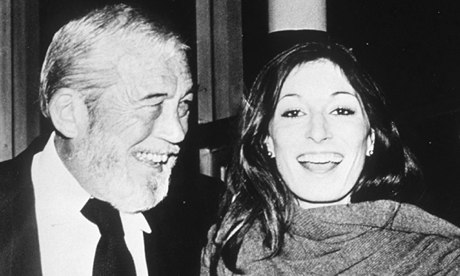 |
| John and Anjelica Huston, 1976 (photo: Rex Features). |
Young Anjelica attends a local village school run by nuns (though her family is atheist), roams the green fields of St. Cleran's with the children of the servants (her only playmates) and becomes an excellent horsewoman. As soon as she is old enough she fox hunts, sometimes sidesaddle, with the local gentry. "There was nothing so close to the feeling of flying as being on a good Irish hunter when the hounds picked up a scent," Anjelica writes. Her eccentric brother Tony takes up falconry. Her beautiful young mother, the former ballerina Enrica "Ricki" Soma, the fourth of John Huston's five wives, endlessly arranges renovations to the ramshackle estate and entertains the numerous visitors, many of them writers, who the usually absent John Huston brings home with him.
Monday, March 17, 2014
TCR Story of the Month for March: "Stereograms" by Jen Julian
.JPG) |
| Author Jen Julian |
Jen Julian is from Goldsboro, North Carolina. She received her MFA in Fiction from UNC-Greensboro and is currently an English PhD candidate at the University of Missouri, Columbia. Her fiction and nonfiction have appeared in Press 53’s 2010 and 2013 Open Awards Anthologies, Four Way Review, Toasted Cheese, and an up-and-coming issue of The North Carolina Literary Review Online. She is winner of the University of Missouri's 2013 Margery McKinney Award for Fiction and was a finalist for North Carolina State University's 2009 Brenda L. Smart Fiction Prize.
"Stereograms" was published in New Delta Review and won New Delta Review's 2013 Matt Clark Fiction Prize.
Monday, March 3, 2014
Seven American Deaths and Disasters (An Interview with Poet Kenneth Goldsmith)
 |
| Seven American Deaths and Disasters |
Goldsmith is a proponent of "uncreative writing" that retextualizes, reframes, and recycles existing material. He has added nothing to the content of Seven American Deaths and Disasters, which was recently published by New York-based powerHouse Books. His contribution is the concept itself plus careful selection and editing.
"What constitutes the act of writing is rapidly changing in the digital age," Goldsmith explained to The Committee Room. "Skills that we used to consider outside of the scope of writing — word processing, databasing, recycling, appropriation, intentional plagiarism, identity ciphering, and intensive programming, but to name a few — are now the ways we routinely construct literature."
 |
| Kenneth Goldsmith |
Tuesday, February 25, 2014
TCR Story of the Month for February: "Arab Spring" by Joseph Giordano
.JPG) |
| Joseph Giordano |
Joseph Giordano is a Texas-based writer whose work has appeared in more than thirty magazines including Bartleby Snopes, The Foliate Oak, and The Summerset Review.
"Arab Spring" was published in Newfound (Fall 2013).
To read "Arab Spring" click here
TCR Story of the Month highlights an outstanding work of short fiction published online within the preceding twelve months.
Thursday, February 6, 2014
Update on TCR Story of the Month Author: Jean Ryan's story "Greyhound" included in Ashland Creek Press anthology Among Animals
 |
| Among Animals (cover shows red fox photographed at San Juan Island, Washington). |
Ryan's story "Paradise," published in Blue Lake Review, was TCR Story of the Month for March 2012.
Among Animals is a varied collection of stories by writers from around the world exploring the ways in which animals and humans both understand and challenge one another.
In "Greyhound," a woman brings home a rescued racing dog for her troubled partner in the hope that they might help each other heal.
Publisher's Weekly has called Jean Ryan a writer who "controls devastating psychological material with tight prose, quick scene changes, and a scientist’s observant eye."
The Los Angeles Review says "Ryan’s stories praise the transformative power of compassion, and reveal how the rescued can become the rescuer."
Tuesday, January 28, 2014
A Recovered American Classic: "The Lost Weekend" by Charles Jackson (An Interview with Charles Jackson Biographer Blake Bailey)
Novels are often overshadowed to the point of near oblivion by successful film versions. Forrest Gump. The Silence of the Lambs. Kramer vs. Kramer. Midnight Cowboy. In the Heat of the Night. True Grit. The Graduate. Would anyone think of this as a list of novels?
Similarly,The Lost Weekend is remembered today, if it is remembered at all, as an Oscar winning 1945 film directed by Billy Wilder and starring Ray Milland as a struggling and not so young anymore writer on a harrowing, five-day drinking binge in Manhattan.
The even harder hitting novel The Lost Weekend by Charles Jackson, upon which the movie is based, was published seventy years ago this month, in January 1944. The Lost Weekend sold a half million copies in its first few years of publication, was translated into several languages, and made its author famous, at least for awhile.
Jackson and his novel have recently emerged from the shadows. Vintage Books has brought out a trade paperback edition ofThe Lost Weekend. Also, a superb biography of Jackson -- Farther and Wilder: The Lost Weekends and Literary Dreams of Charles Jackson -- by Blake Bailey was published by Alfred A. Knopf.
Similarly,The Lost Weekend is remembered today, if it is remembered at all, as an Oscar winning 1945 film directed by Billy Wilder and starring Ray Milland as a struggling and not so young anymore writer on a harrowing, five-day drinking binge in Manhattan.
The even harder hitting novel The Lost Weekend by Charles Jackson, upon which the movie is based, was published seventy years ago this month, in January 1944. The Lost Weekend sold a half million copies in its first few years of publication, was translated into several languages, and made its author famous, at least for awhile.
Jackson and his novel have recently emerged from the shadows. Vintage Books has brought out a trade paperback edition ofThe Lost Weekend. Also, a superb biography of Jackson -- Farther and Wilder: The Lost Weekends and Literary Dreams of Charles Jackson -- by Blake Bailey was published by Alfred A. Knopf.
Thursday, January 16, 2014
TCR Story of the Month for January -- "Translating Kun" by Inderjeet Mani
| Inderjeet Mani |
"Translating Kun" is set in Thailand, which Mani calls a "land of bars and Buddhism" and nights "full of heady tropical scents with the chatter of humans and insects riding on the breeze." Employing a dreamlike mood, the story looks at the very different realities of a pleasure seeking expatriate writer and a hardworking Thai woman with whom he is involved.
Inderjeet Mani studied creative writing at the University of Pennsylvania, at Bread Loaf, and at Harvard. He has been published in Eclectica, BLIP Magazine (now New World Writing), 3:AM Magazine, Drunken Boat (Finalist for the Pan Literary Award, also one of storySouth’s Million Writers Award Notable Stories of 2007), Nimrod (Finalist for Katherine Anne Porter Prize), WIND (2003 Short Fiction Award), Word Riot, Asia Writes, The Deccan Herald, and various other venues. His books include The Imagined Moment, which analyzes time in fiction. Mani is also one of the people behind the Solpix lit-film web portal.
Wednesday, January 1, 2014
The Healing Power of Fiction: "The Novel Cure" by Ella Berthoud and Susan Elderkin
What is bibliotherapy? "The prescribing of fiction for life's ailments," is the definition provided by The Novel Cure authors Ella Berthoud and Susan Elderkin. Berthoud and Elderkin are both members of the faculty at The School of Life, a London-based international organization founded in 2008 by essayist and philosopher Alain de Botton, that is devoted to developing emotional intelligence through the help of culture.
Suffering people have long turned to non-fiction self-help books for assistance. But fiction? Can reading fiction really help cure what ails you? Berthoud and Elderkin unequivocally say yes. "Our belief in the effectiveness of fiction as the purest and best form of bibliotherapy is based on our own experience with patients and bolstered by an avalanche of anecdotal evidence," they write in The Novel Cure. "Some treatments will lead to a complete cure. Others will simply offer solace, showing you that you are not alone. All will offer temporary relief of your symptoms due to the power of literature to distract and transport."
Subscribe to:
Posts (Atom)




